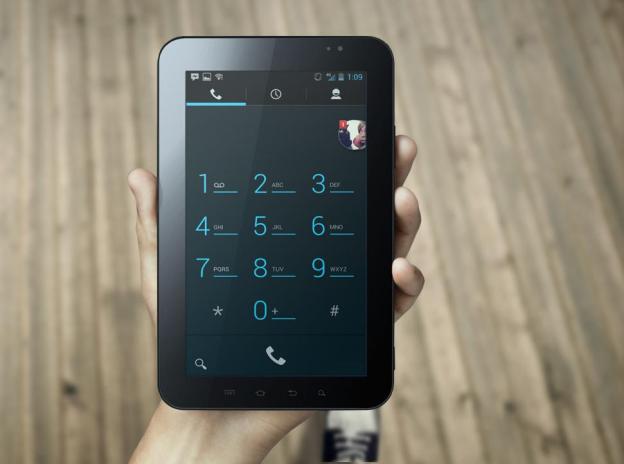
I’ve been looking with some lust at the new 6.3-inch Samsung Galaxy Mega Phone, which got me thinking about how quickly we’ve gone from 4 inches being the ideal phone size to the S4’s 5 inch screen. With the Galaxy Mega Phone coming, it’s entirely likely that 7 inches – the size of a Kindle or an iPad Mini – is in the works somewhere. These are the devices people talk about when referring to “phablets,” and it appears that we’re getting more comfortable with the idea of massive phones.
How perceptions are changing
A few years back I carried around an HTC phone with a magnetic keyboard called the HTC Advantage. Folks looked at me like I was insane and, to be honest, I probably looked like it. A 5-inch “palm top” computer with a magnetically-attached keyboard was pretty unusual in 2007. But it was very easy to read the display and the keyboard made typing longer documents much easier than the keyboards typical of phones back then. It was both thick and heavy, which was inconvenient but gave it the added functionality of a weapon in a pinch. Keep in mind, this was right around the time the iPhone was launched – at 3.5 inches.
Apple is getting beat up because they have a 4-inch phone that’s too small
So how big can we go?
Virtualizing the Phone
A lot of us use Skype on our computers, which sort of means we have phones with far bigger screens than just 7 inches. When I make “calls” on Skype, I’m using twin 27-inch monitors and a 25-pound mini-tower – hardly portable, but that doesn’t matter because I won’t ever put any part of it next to my head. If you watch people use their phones, they increasingly use headsets or talk into their speakerphones. Pay attention and you’ll see more and more people holding their phones in front of them, instead of next to their heads, having strangely public conversations. This might be because, when you’re using a headset, unless people see it, it’s hard to tell you from a crazy person who’s chatting with the air. Holding a phone in front of you somehow makes you look a lot more sane (unless the “phone” turns out to be a Snickers bar. Then you might actually be a crazy person).
If folks are getting used to not holding a phone against their heads, that means that phone size doesn’t have to stop, even at 7 inches. It can be as big as you’re willing to carry, so long as you’re comfortable wearing a headset or holding it out in front of you. That might put the upper limit around 10 inches, because anything larger than an iPad held at arm’s length will get really heavy really fast – great for arm strength and muscle tone, though.
Advantages of a Bigger Phone
The big advantage to bigger phones is both more battery life and larger screens. The first potentially gives you more time to play games or read with the device and the second means you can see stuff more easily. More importantly, if you have a standard tablet you can start leaving it at home and have fewer things to carry, forget, or worry about. It’s easy to leave a tablet somewhere, but much harder to forget about a phone.
Wrapping up … Watches?
One of the things that will either accelerate or derail this move toward larger phones is the emergence of Smartwatches. Used in conjunction with one of these phablets, they could allow you to gain the benefits of the small screen while still leaving the large device in your purse or backpack. Or they could provide an alternative to the phablet by giving you just enough extra screen real estate that you won’t need it. I’m a proponent of the first theory, because that’s how I’d likely use the device, but I’m hardly representative. Whatever the case, get ready for much bigger phones and, if nothing else, rest easy knowing that – if nothing else – you’ll have a small weapon handy, should the need arise.
Editors' Recommendations
- Every new iMessage feature coming to your iPhone in iOS 18
- 5 reasons why you shouldn’t buy the iPhone 15 Pro
- Don’t buy this $300 Motorola phone, get this other one instead
- Have an iPhone that won’t turn off? Here’s how to fix it
- Don’t expect a folding iPhone anytime soon


